#Bicolano gods
Explore tagged Tumblr posts
Text
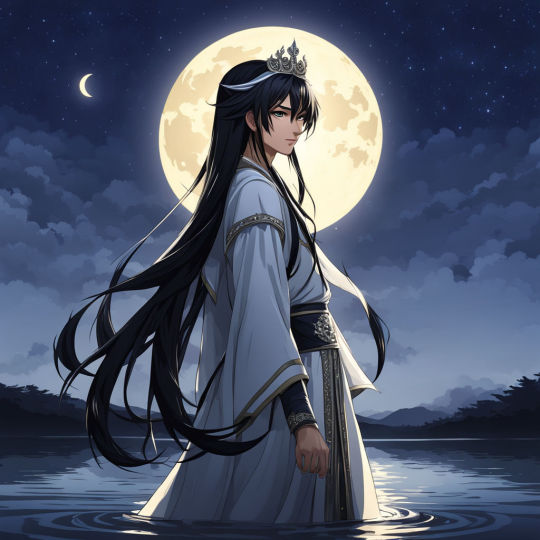
Bulan god of the Moon, timid and submissive to his brother Daga, he obeyed his brother Daga to battle Languit even though he does not want to. In other myths he is desired by the Bacunawa
#Bulan#god of the moon#Bicol mythology#Bulan of Bicol mythology#philippine mythology#Bicolano pantheon#Bicolano gods#Bicolano deity
0 notes
Text
the best way for me to get in tune of my own native language is to just start translating a bunch of random text from my interests be it games, song lyrics, books, etc... something so liberating just piecing together words and coming up with ways on how to say certain phrases in another language
#i remember years ago in my free time i was on my old beaten-up laptop translating like the first few chapters of death note in filipino lol#dont know where the laptop is or where the files have gone it's probably still here somewhere#my translations were very literal and had rough grammar but god was it fun to see characters speaking my mother tongue#can say i improved a lot on my translating skills now especially in terms of interpreting more complex/poetic text#i love gushing abt language since my mom speaks kapampangan‚ pangalatok (she insists on calling it that instead of pangasinense) & bicolano#relatives from my mom's side speaks kapampangan too so i picked up some of the phrases but naturally forgot most of them which i regret#i need to start locking in to earn the polyglot title#txt
10 notes
·
View notes
Text
Notes on Anitismo - The Ancient Religion of the Philippines by Isabelo de los Reyes.
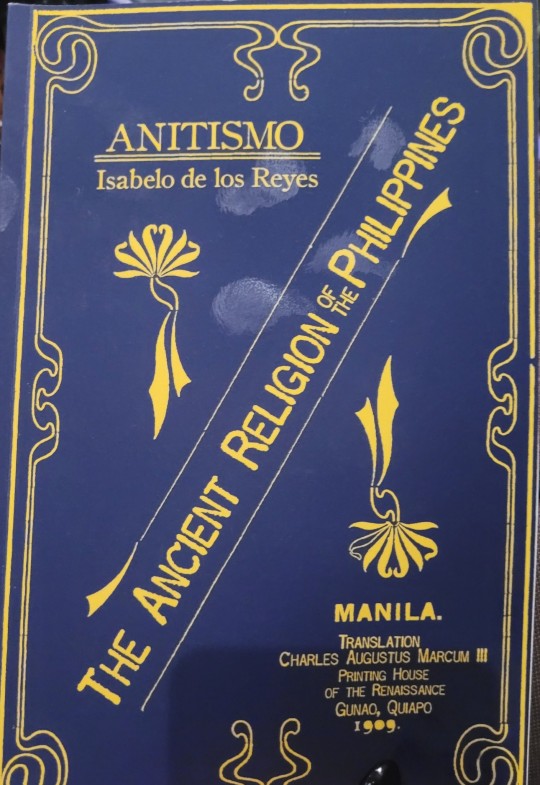
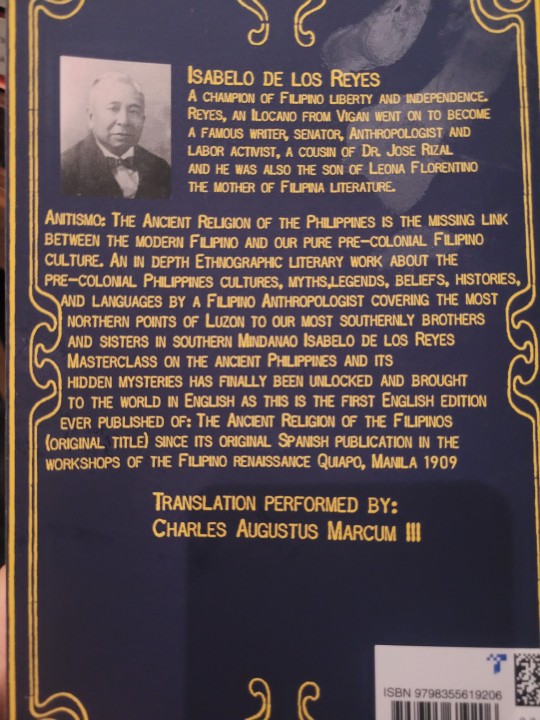
Keep in mind - this was written a while back.
Ancient Chronicles written by the Jesuit hispanic Friars state that at the that the first spaniards set foot in the Philippines from the coast of visayas to Manila there was a considerable population of Muslim converts
This was especially true for Mindanao due to conversion by Islamic teachers from Borneo
De los Reyes argues that because of this, to find native Filipino religion at its purest, we must look to the North
Distinguishing native religion without outside influence such as from Islam, Hinduism, Christianity etc can be tricky
However he argues that the traces of Native Filipino religion can be found in the stories superstitions and advice that belong to various Filipino ethnic groups (Tagalogs, Bicolanos, Zambalenos etc)
From the South of the country in Mindanao to the extreme North like Luzon, De los Reyes argues then native Filipino religion was consistent
This religion was Anitism or the Cult of Anito, meaning souls of the ancestors.
Anitism is not a monolithic religion and hosts a broad pantheon ranging from Gods to animals, nature, elements and space.
The Philippines had its own modern spiritism and De los Reyes argues this may have been the origins of the cults of "Romanist Saints" (Catholic saints) in the Philippines. By this I think he means that Filipino spirituality influenced how Filipinos proceeded with Catholic worship.
The oldest chronicles about the Philippines can be found in various museums and libraries (such as the National Library of Madrid, Covenant of St Augustine in Manila)
We can follow these chronicles, from when the Jesuit Pedro Quirino provided news of religion in the Philippines in 1604, followed by reproductions by others like the Jesuit Colin in 1663 and others such as Fr. Morga, Gonzalez de Mendoza, Aduarte etc.
Fr Morga said that Filipinos practised Anitism in certain regions like Camarines and Cagayan.
Some traditions would say that Manila and its regions were not originally native to the island - they were from Malayan islands and other remote areas.
Before the Spaniards arrived, Islamic teachers from Borneo came to preach and interacted with the locals
Their teachings and beliefs spread quickly throughout the Philippines
Fr. Grijalva writes that they (Filipinos) started adopting their traditions and took on their names.
De Los Reyes argues that Spanish conquistadors' arrival/conquest was delayed because Filipinos were already familiar with various religions and beliefs and also because of the hands of Datu Lapu Lapu. What I believe he is arguing is that Datu Lapu Lapu and the previous exposure Filipinos had to different religions at first delayed Spanish influence from spreading so quickly.
Other islanders who weren't under the control of the government in the Philippines has their beliefs influenced by religious preachers who travelled to them from the Straits of Malacca and the Red Sea.
An account, dated April 20th 1572 (preserved in the archives of India) which is from the conquest of Luzon details "In these towns, closest to the sea, they do not eat any pork, which the moors taught them. But if you ask them, they say they do not know Muhammed or his law." This account was reproduced by Wenceslao Retana.
In actuality, very few Filipinos could understand/read the teachings of the Koran despite the Islamic influence.
In Filipino traditions, reverence and worship was given to nature and the elements, and this was usually consistent throughout the islands.
Native Filipino religion beliefs include elements, animals, stars and ancestors.
Filipino religion in Manila and nearby areas was a mixture or Anitism, Buddhism, Hinduism and Islam brought by the Malays of Borneo.
Vocabulary included Sanskrit and Malay terms such as Bathala, meaning Lord.
However these terms are not used in Northern provinces.
De Los Reyes argues that Itnegs and other mountain tribes conserved and maintained the purest form of Filipino religion
In the Ilocos, Cagayan, Isabela and other provinces of Northern Luzon, native Filipino religion was more prevalent
Hindus and Buddhists converted many in Java and Malaysia.
However Muslim influence became dominant in 1478 - 60 years before the Dutch invasion.
According to Javanese legends, Hindus arrives in Java 78 years before Christ.
The first Malays came from the Minangkabau river region to establish cities in Malacca , Ojohor and Singapore in the 12th century, as per Malacca records.
In the 13th, 14th and 15th centuries, there were various Malaysian emigrations reaching the Philippines
De Los Reyes argues that Filipinos may have also populated the islands of Malaysia, and emigrations could have originated from strong winds coming down from the North.
The first Spaniards found the son of Lakandula, King of Manila, when they went to Borneo.
The emperor's master of ceremonies from Japan (Mr Fujita) argued that emigration likely came from the north and that Filipinos may have some relations to the Japanese.
According to Geographers and Historians of the Mariana Islands, what De Los Reyes calls the "know it all Spanish" - had no idea about interesting ruins found in Oceania, one of which was a prehistoric statue that was being held in the British museum.
He argues there may be hidden megaliths, artefacts, and remnants of lost civilisation in the Philippines, as seen in various locations such as : Butacan caves, Pangibalon Hill, Madias de Iloilo and Nasso.
#Philippines#pre colonial philippines#Filipino#Filipino history#Anitism#Filipino religion#Pinoy#Isabelo de los Reyes#History#Asia#Asian history#South east Asian history#Religion#ancient religion#South east asia#Colonialism#spanish colonial#Spanish colonialism#Philippines history#Philippine history#Anitismo#Keep in mind this was written a while ago so some terms may be outdated#I've tried to interpret some tricky parts the best I could#My ass who is from the Northern Philippines 🗿
68 notes
·
View notes
Text

ASUANG, SAINT OF DAMNATION
The mother of monsters and all things hellish. Dwelling in the depths of the earth under Mt. Malinao, from her cave come all manner of bats and beast. She loves to reward do-gooders almost as much as she loves to punish sinners.
+
This is a reimagining of Asuang, the god of evil in Bicolano myth. Although in the original myth Asuang is a man, I thought having a whole "mother of all monsters" theme would be more interesting! I was aiming for a ghoulish vibe for this drawing - though hopefully not too scary.
+
Asuang is the Saint of Damnation, the Swellbloom Kids equivalent of Umineko witches. She features in my module, When the Crocodiles Weep! Check it out here:
5 notes
·
View notes
Text

Today's Collaboration Release Male Hairstyle
A simple wavy short hairstyle for men. Libulan or bulan is a deity presiding over the moon. One of three celestial god honored by bicolano. Also believe that he is a patron God of Homosexuality, non proven otherwise.
DOWNLOAD
#ts4cc#ts4 cas#ts4 custom content#s4 cc#sims#s4#ts4#the sims 4#s4ccfinds#sims4cc#alpha cc#sims 4 cc#the sims cc#ts4 cc#cccc#cc#sims 4#cas#cc finds#masimmy5#mazero5#mythical creatures#mythology and folklore#godofmoon#moon deity#god of the moon#moon#the sims#hairstyle#long hair
11 notes
·
View notes
Text
The Ancient Bicolano Deities and Creatures
(ALL ART BY AFRAN MARFIL)
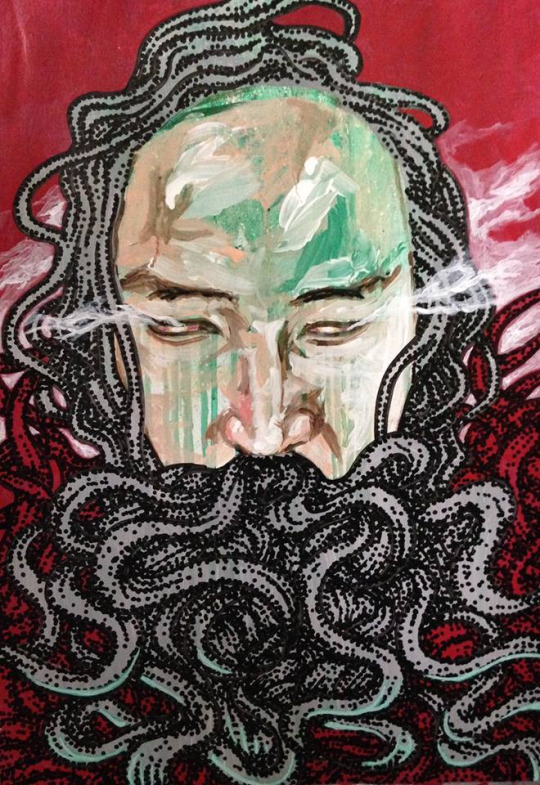
- "Gugurang"
Gugurang loomed high in the Bikol pantheon of gods. He was their (the people’s) benefactor, guide and defender against the god of evil, Aswang, who would anger Gugurang by inciting the people to rebel against the good god, do evil deeds and resort to sloth and easy pleasures. Seeing this, Gugurang would punish and pounce on Aswang and to his people, he gave protection and exhorted them to make sacrifices in order to appease his anger. The myths disclose him as a powerful and loving god who would vent his fury mercilessly on the transgressor but would shower them with gifts and protection in return. (Realubit, Bikols of the Philippines, p. 10).
It is believed that ancient people looked up to him with great respect as they fervently gestured to the skies and spoke with profound affection for a great lord whom they adored, revered, and feared.

- "Asuang"
Brother of Gugurang; an evil god who wanted Gugurang’s fire, and gathered evil spirits and advisers to cause immortality and crime to reign; vanquished by Gugurang but his influence still lingers.

- "Bakunawa"
Believed to be the cause of eclipse, Bakunawa is the deity of the deep and the underworld.
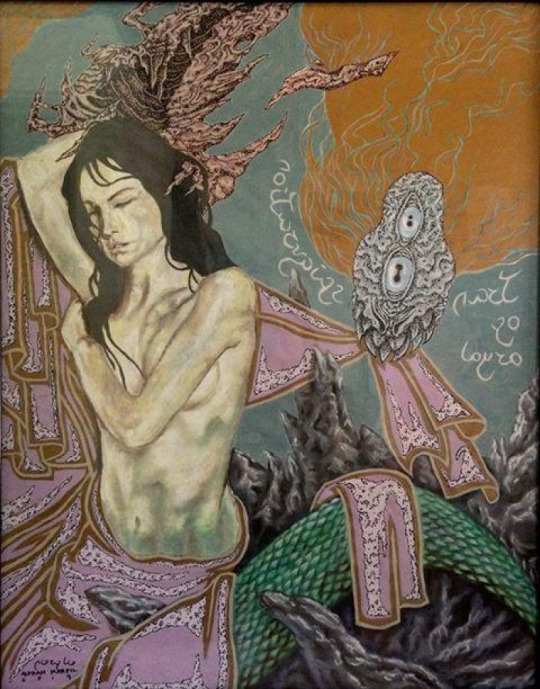
- "Oryol"
A demi-goddess in Bicolano myths, she is mentioned in the Ibalong Epic. A wily serpent who appeared as a beautiful maiden with a seductive voice; admired the hero Handyong’s bravery and gallantry, leading her to aid the hero in clearing the region of beasts until peace came into the land

- "Haliya"
Haliya is the masked goddess of the moonlight worshipped in pre-colonial Ibalon (present-day Bikol region) and in some parts of coastal Bisayas. Haliya was a warrior goddess who would wear a mask of gold to hide her beauty. In Philippine Mythology, Haliya was the name of a lunar goddess. She was said to be so beautiful that the sea goddess Bakunawa fell in love with her and sought her affections.
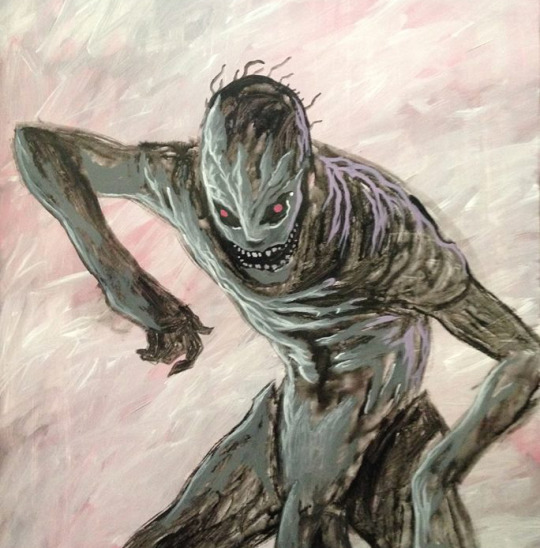
- "Tambaluslos"
A tall humanoid creature from Bicol. Generally black in complexion, it has long and thin legs with big joints, hooves, long thin arms and fingers, and a mane that runs from the back of the head down to its buttocks. It also has wide protruding lips like an ape. Another strange feature of this creature is that it has a long wrinkled penis and loose testicles which dangle on the ground. The creature’s name is derived from this feature which is referred to as ‘luslus’ which means ‘loose and hanging’. The Tambaluslos chases people who wander in the woods. The only way to escape it is to take off your clothes and wear them upside-down. The creature finds this act very hilarious and it will laugh so much that its wide lips would cover its face, therefore preventing it from seeing the victim who in turn will have ample time to escape.
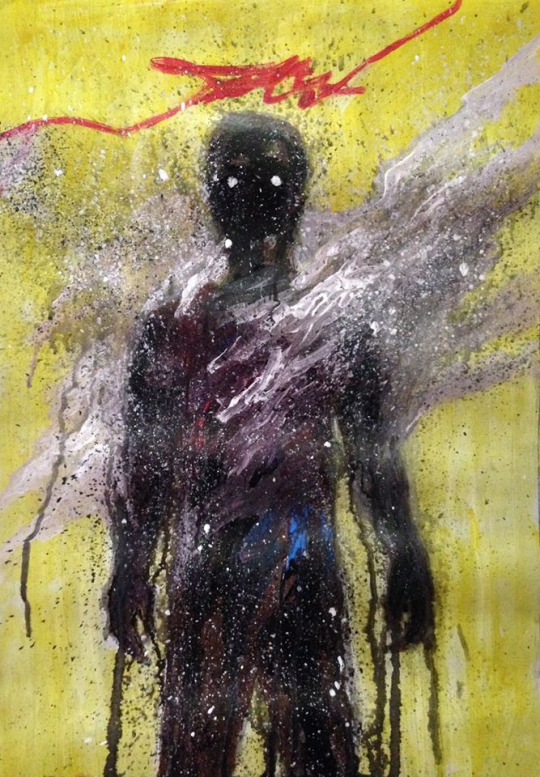
- "Tawong Lipod"
The ''Tawong Lipod'' or wind people, is a race of mythological creatures in Philippine mythology, most prevalent in Bicol area they are the court servants and handmaidens of the lunar gods Bulan and Haliya. They are beautiful, supernatural beings, youthful and elegant, and superb in the art of dancing. They are the nymphs of the winds and clouds forever loyal to the moon gods. lithe beings with light-colored skin who inhabit the skies, and are often depicted taking flight. they are called Biraddali by the Tausug
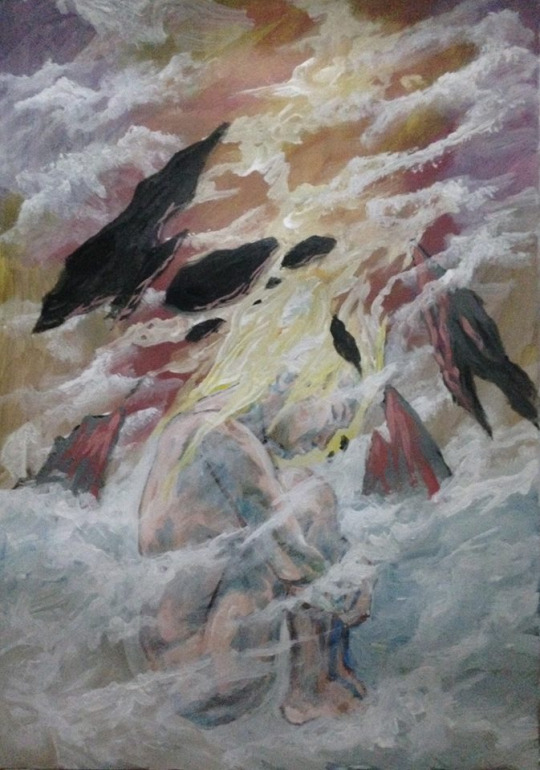
- "Daragang Magayon (Beautiful Maiden)"
The heroine that appears in the legend of Mt. Mayon. She grew up to be a very beautiful and sweet woman that struck the swains from faraway tribes who vied for her attention. When a war between her lover, Panganoron, and his enemy, Pagtuga, arise, her lover dies in her arms. In her grief, she grabs the knife used to kill Panganoron and stabbed herself. Magayon and Panganoron are buried together, their burial soon turning into what is now Mt. Mayon.
Some people say that it's a curse because she took her own life, but myths and legends say Magayon is the volcano and Panganoron is the clouds that surround the beautiful volcano.
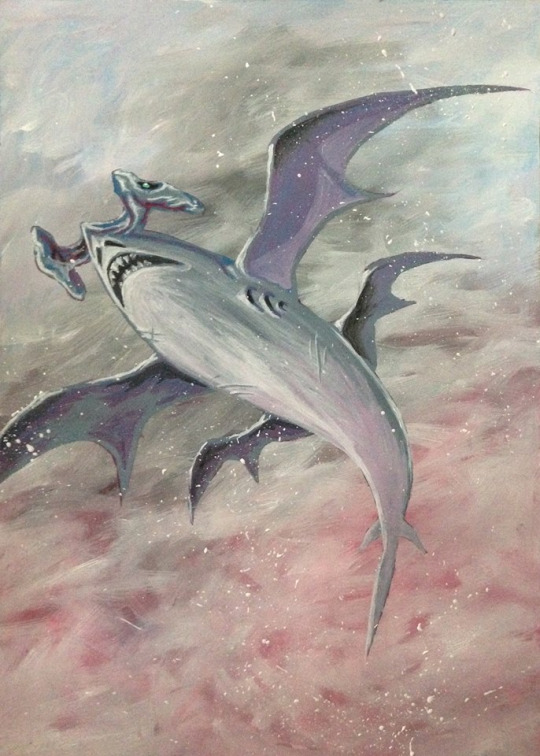
- "Triburones"
A shark, with razor sharp teeth, that can fly and circle its prey from the air. ‘Tiburon’ is Spanish for ‘shark’, most English translations of the Ibalon use this name for the creature (Triburon). In Bikol, these creatures are known as Pating na Pakpakan. In the Ibalon epic, they were tamed by the warrior-hero Handyong.
#bicolano deities#phillippine deities#filipino gods#filipino goddesses#philippines#philippine art#art#research#alfran marfil#eclipse#gugurang#asuang#bakunawa#oryol#haliya#tambaluslos#tawong lipod#triburones#long post#bicol#bicolano#bikolano#bikol
37 notes
·
View notes
Text
listen LISTEN what if percy is a legacy, but not of greek mythology, but filipino. Like one of his grandparents/great grandparents was a love of Onos, the bicolano god of storms and flood water, which is why he finds it so easy to create storms (esp. without any prior practice)
97 notes
·
View notes
Text

In Bicolano myth, Asuang is the god of evil living in Mt. Malinao and the brother of Gugurang, the god of good. He was punished by Gugurang for attempting to steal the fire of Mt. Mayon.
In my design for him, I wanted to emphasize the theme of darkness but also life by giving him the traits of a salamander and having fluorescent mushrooms grow out of his head. This is in contrast to Gugurang's fiery design, as fire both gives off light and causes death.
5 notes
·
View notes
Note
Definitely a fair game yes
———
Despite being Filipino AND a bicolano (Haliya is a Bicolano god) I never knew these mythos damn— only heard of the common ones 😔😔 (Duwende, Tikbalang etc.) but thats actually really interesting and nice to see them being inspired by a bunch of Filipino mythos!!
' Checkers? ' Shows a checker board
———
Here's an extra question!
What inspired you to create Qiūtiān?


they're having a fair game!
answer to your question under "keep reading" !
Laya is taken from the Philippines mythos. (Bakunawa, Haliya, Aman Saya, sirenas ect) and a hint of taiyin xingjun from Chinese mythos. For clear reasons, my main introduction to the Filipino mythologies was auburnitzy’s story (awesome person btw go check his acc!) but I took my own approach with how I want to make the story.
currently, researching and developing her story as i go. as well as other characters. same with their mythologies.
17 notes
·
View notes
Note
im wondering this,,,, what is the most aggressive sounding filipino accent.
Ilonggo.
Jk.
Okay. For me, it's a tie between Northern Bicolano and Ilocano.
And that's saying something coming from a Cebuana. These are based from personal accounts lang naman. Northern Bicolanos (or maybe just the bunch I met) have strong push to every word. Like, if it was a gun, it's a sweet old calibre 45. Ilocano is machine gun. One time I thought there was an epic rap battle going on sa tindahan ni Aleng Nena, then it turns out it's just an ilocano guy buying something.
If people are going to argue about Waray, lemme tell you, Waray just sounded agressive because the langauge user might be angry herself, and god knows, you always encounter an angry Waray. In normal convos it sounds okay.
#filipino accent#accent#ilocano#ilokano#correct me if im wrong#this doesnt mean central bicolanos are not agressive as well#fuck they still are#just that northern bicolanos have more hate that's all#bikol#bicol#bicolano#waray#bisaya
27 notes
·
View notes
Text

Linti god of lightning and enforcer of Gugurang. He wields thousand spears and is ready to smite monsters and evil doers.
0 notes
Photo

Lakapati: the hermaphrodite Tagalog deity and protector of sown fields, sufficient field waters, and abundant fish catch;[3] a major fertility deity;[4] deity of vagrants and waifs;[5] a patron of cultivated lands and husbandry[6] Ikapati: the Tagalog goddess of cultivated land and fertility[7] Lakan-bakod: the Tagalog god of the fruits of the earth who dwells in certain plants;[8] the god of crops;[9] the god of rice whose hollow statues have gilded eyes, teeth, and genitals; food and wine are introduced to his mouth to secure a good crop;[10] the protector of fences[11] Kukarog: the Bicolano giant who was swept by waters into the sea, where his genital can be seen as a rock jutting from the ocean[12] Ibabasag: the Bukidnon goddess of pregnant women[13] (at Pasadena, California) https://www.instagram.com/p/CIEVvUVhVsL/?igshid=ch7q9k8avp0g
3 notes
·
View notes
Text
i'm procrastinating so here are notes instead
so in ph mythology we have this moon god called Bulan (and for this post we'll look at him from Bikolano myths perspective).
Anyway.
Bulan is very good-looking, and kind, described as 'comely' and 'docile' which is very much how you feel when you're looking at the moon: tranquil.
And you'd think this Precious Boi™️ will be a prey to the hundreds of monsters prevalent in PH mythology but aCTUALLY he befriended most of them including:
the Magindara (Bicolano mythology) - described as vicious mermaids
Asuang (also Bicolano mythology) - considered as a dark and evil god, father of monsters
... and other vicious creatures that seemed to become tame in his presence. He also earned the admiration and favor of most gods, even the Big and the Bad, like:
Magindang - powerful god of the sea and sea creatures
Bakunawa - the deity of the deep and the underworld, who later on tried to eat him (the moon) and was believed to be the cause of lunar eclipse.
Sidapa - god of death, showered Bulan and his sister with gifts after the whole debacle with Bakunawa
There's some parallelism with Visayan mythology, where some stories say Bulan is another form of Libulan, or there's just Libulan and Bulan is a whole other different deity, but there he's also admired by:
Luyong Baybay - deity of the sea and the tides, and this was believed to be the reason why the tides rise to greet the moon
Bakunawa - in this particular version, there are seven moons, all of which Bakunawa desired, and had managed to swallow the other six except for the seventh, which is Bulan.
also Sidapa - I can't remember where I read this version, but there's something about Sidapa rescuing Bulan from his other admirers (who can get a bit aggressive; case and point, Bakunawa).
Don't ask me why versions are different, the Philippines is made up of a lot of islands and divided into regions, hence the differences
I just find it a point of interest how Bulan is so pure he literally overcomes creatures with the power of friendship and kindness, when all the other legends describe physical strength and brutality. He's amazing.
And also it probably helps that anyone messing with him would mess with his fierce protectors, esp his sister Haliya
TL;DR
Bulan is precious and in this house we love and appreciate him.
#notes#mythology#philippine mythology#bulan#sidapa#gods and goddesses#ph myths#idk i just love bulan so much#their myth is an important aspect in my wip#and also#this is me procrastinating
164 notes
·
View notes
Text
ARAT NA MGA MAGAGAYON!
Mayon Rest House
Mayon Skyline View also known as Mayon Rest House is one of the top destinations in Albay. This is the closest you’ll get to the Mayon Volcano.
Mayon rest house is located halfway on the slope of Mount Mayon. This was a Mayon Skyline Hotel, but due to the unpredictable outbursts of Mt. Mayon years ago the business has been discontinued. The place has been preserved and converted into a park called Mayon rest house. Many tourist come to visit here and see the beautiful view of Mayon Volcano, this is also a place for parties and some recreational facilities like picnics and field trips due to its cool temperature that reminds of Tagaytay’s People Sky Park.
There is also the Mayon Planetarium and Science Park where photo exhibits and documentaries about volcanoes are shown and of course to be more enjoyable for the trip here are the fees: parking Fee – Php 10, Planetarium Fee – Php 6, wall Climbing – Php 50/hour, zip Slide – Php 100. As for your transportation, you can go to Mayon rest house using rented motorcycles, van, and jeepney because there is no public transportation, happy trip!
Yes! Indeed this is the beautiful and best place I have ever visited so far. Mayon rest house is a beautiful place to visit and roam around. I can say that your effort just to get here is worth it. I came here in 2016 but I still remember and feel how happy I was when I got here. There is nothing that can compare the beauty of this place which every Bicolanos are proud of.
Fresh and cold breeze of air will touched your skin and from the Science Park you can see up here the beautiful view of nature. Adjacent to the Mayon Planetarium is the chapel which tourist visit to give thanks to God.
Mayon rest house is not just for those people who want to enjoy and have fun, but this is also for those people who want to find peace in the environment. Just by looking at the beautiful views can make us find peace in ourselves, it soothes our minds to the things we want to forget even just for a moment and helps to find ourselves when we forget to remember who we really are.
"You can't make positive choices for the rest of your life without an environment that makes those choices easy, natural, and enjoyable."-unknown
And surely when you come home, you'll treasure those feelings and thoughts, memories, experiences and few things that you discovered when you went to Mayon rest house.
#Happytripmgamagagayon

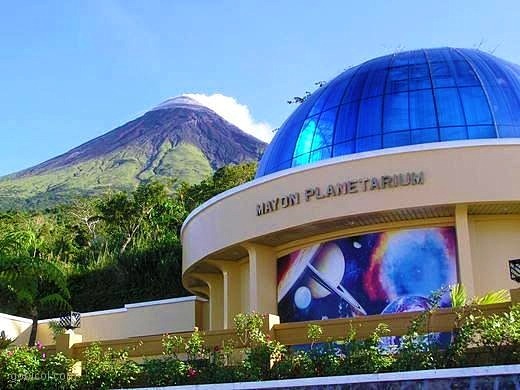
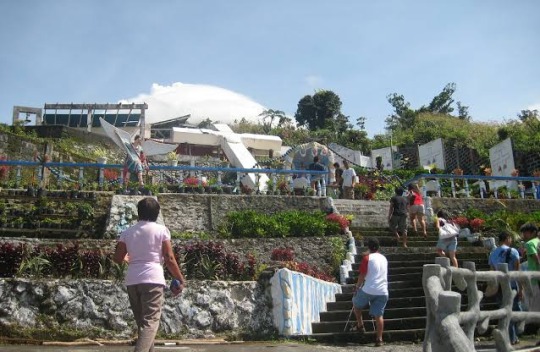

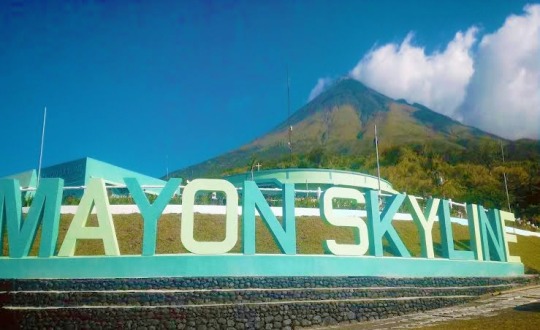
1 note
·
View note
Text
Hybrid Identity
After 300+ years of Spanish colonization and 48 years of American occupation, it is undeniable as it is, to infer that most, if not all, of the Filipino have a lot of experience when it comes to the effects of globalization in their culture. However, the colonial mentality developed through the years among many have not yet marred the quality of some of the beliefs, values, and traditions that Filipino families tend to uphold. Rather than eradicating it, cultures have began to merge, forming hybrid identities.
As a young Filipino, I am very much a result of the blend of merging international and local cultures, due and propagated by the ever rising trend of media, especially that of social. From my upbringing at home to my interactions with people and the things around me, the hybrid nature in my identity becomes evident in comparison to what has been traditionally accepted by the local culture.

While growing up, I used to not listen to any OPM at all. Partly because I did not speak Filipino well, while the other was because it was simply not being played often at home. In the meantime, I grew up surrounded by people who enjoyed various kinds of other music from the West. Classics like Bach and Mozart to pop rock like Paramore and Fall out Boy filled my preteens. In 9th grade, I began my k-pop phase and my exposure to this kind of music not only broadened my preferences but also gave me a different view of Asian pop culture. I began to appreciate this kind of variety but I also felt as though I needed to go back to my roots, to go back and try something that Ive thought would be less comfortable or familiar which was OPM. Since then, I’ve fallen in love with some of the music that Filipino pop culture had to offer. From Bach to Ben&Ben, my preferences in music became hybrid in nature. Clearly mutually exclusive from each other, yet complementary in a sense that they form part of my identity as a Filipino. Not only does this apply to music, but as well as food preferences where my love for sushi and dumplings could not compare to how Filipino food always has a special place in my heart. This also applies to language where I’ve been exposed to speaking both English and Filipino at home, Spanish and Bicolano from my mom, a bit of Chinese from some of my friends, and Russian from the Foreign Language Class I took in my first year in college.

As a Filipino Catholic, some global beliefs I have may seem to clash with the local notion of Catholic beliefs. For example, my advocacy for gender equality for the LGBTQA+. Controversially, they seem to go against each other. However, I would like to believe that as an educated Filipino Catholic, the message of loving and respecting your neighbor, and God being the only one who could judge should be taken into account. At some point because of this, they coincide. To put it simply, the teachings I use under the Catholic Church is what I utilize to guide me to make proper decisions in the advocacies I choose to push through with.
My global beliefs regarding sex education and female empowerment are however, challenged by the local conservative and patriarchal system in the Philippines. However, it is from this conservative nature wherein I also get my traditionalist views on romance wherein I believe men should be the ones make their advances when it comes to courting or “ligaw”.

The various belief systems, cultural perceptions, and preferences that may or may not clash with each other but somehow are able to get together continue to develop as years pass and as globalization continues to emphasize itself in modern society today. However, as I continue on living where I am at the moment, these experiences and wisdom continue to form and be part of my hybrid identity.
Paintings by Belin
1 note
·
View note
Note
This is exactly why I went on anon in the first place. Ive seen how you talk to others sending in asks and it scares me this just proves that youre what I feared
I went into this with the intent of helping you
So you’re telling me that the story I grew up learning at school during Filipino subject is wrong? My teachers who loved learning and teaching the subject are wrong? I am wrong even if Im learning it?
Cebuano Mythology says that Bakunawa is *only* a sea serpent who saw the moons and wanted to eat it because he found it pretty or amazing. Others say that Bakunawa had a sister that was a sea turtle who makes the water level increase. The people were frightened that their island would disappear so they killed her. When Bakunawa found out, he ate the moons. The people prayed to their supreme god to punish Bakunawa. THe god refused and told them to bang pots and pans to disturb the Bakunawa who later regurgitated the moon and disappeared. There’s another story involving Bakunawa falling in love but Im straying.
There’s other cultures like the Bicolano mythology that says Bakunawa used to be a goddess who saw the moon and was mesmerized. The moon rejected her affection and she was angry and she turned into a sea serpent to eat the moon. Haliya, the moon’s sister, fought Bakunwa off and caused the moon phases. This is the only story that involves Bakunawa being a god.
I mentioned the FIlipina thing because by giving FIlipino (an already neutral term) a gender, youre participating in what the Spaniards tried to do. Youre participating in the erasure of what my ancestors fought so hard for which is the term and name Filipino for themselves. I didn’t bring it up for whatever reason you think I did
I’m not mansplaining. Mansplaining is applicable to men and I am not a man. I was only trying to help but you come in with these aggressive attitude without giving me a chance. I repeat, I did not do it to be mean, I did it to help. I wasnt trying to make you look like an idiot. I just corrected your spelling. I came into this with no malicious intent. You cant call me a coward or an idiot when you could have handled this calmly and nicely. I won’t even mention the fact that you put tattoos on Burigadang Pada Siniklang Bulawan with how your acting. I dont see why you’re being so annoyed and calling me a coward and stupid.
Have you looked at the content of my blog? I'm in the middle of a divorce. I'm moving to Vegas. I lost a friend. I'm mourning the death of my child. I'm suicidal.
I am learning how to be filiipina in my own way. Colonization changed us. Changed us. We can either acknowledge that or not.
I am going through too much right now. Too much to be dealing with this okay? You want to educate me. I said give me your sources. I'm not having this discussion on anon for peanuts and likes and if you send me another anon I'm throwing it in the trash.
The researcher who I trusted is from the Phillippines and gave me these Gods okay? There is a lot of misinformation. A lot.
Bakunawa was a God before the spaniards.
Just like the manaangal was a Goddess before the Spaniards.
Where are your sources? Why are you so concerned about how I fucking label myself. I get to choose how I want to label myself
FUCK OFF!
#personal#I have snapped#and i'm turning off anon you cowards#I learned it in school#as if school wasn't full of misinformation#I think for myself ya'll
0 notes